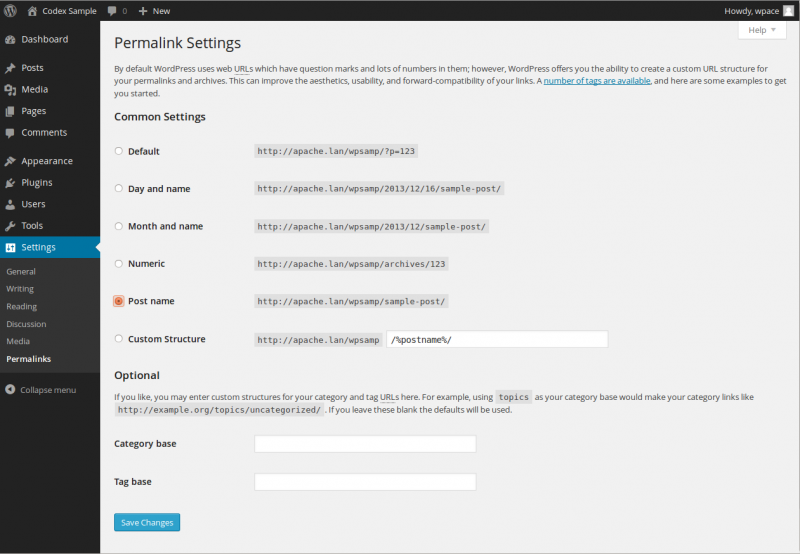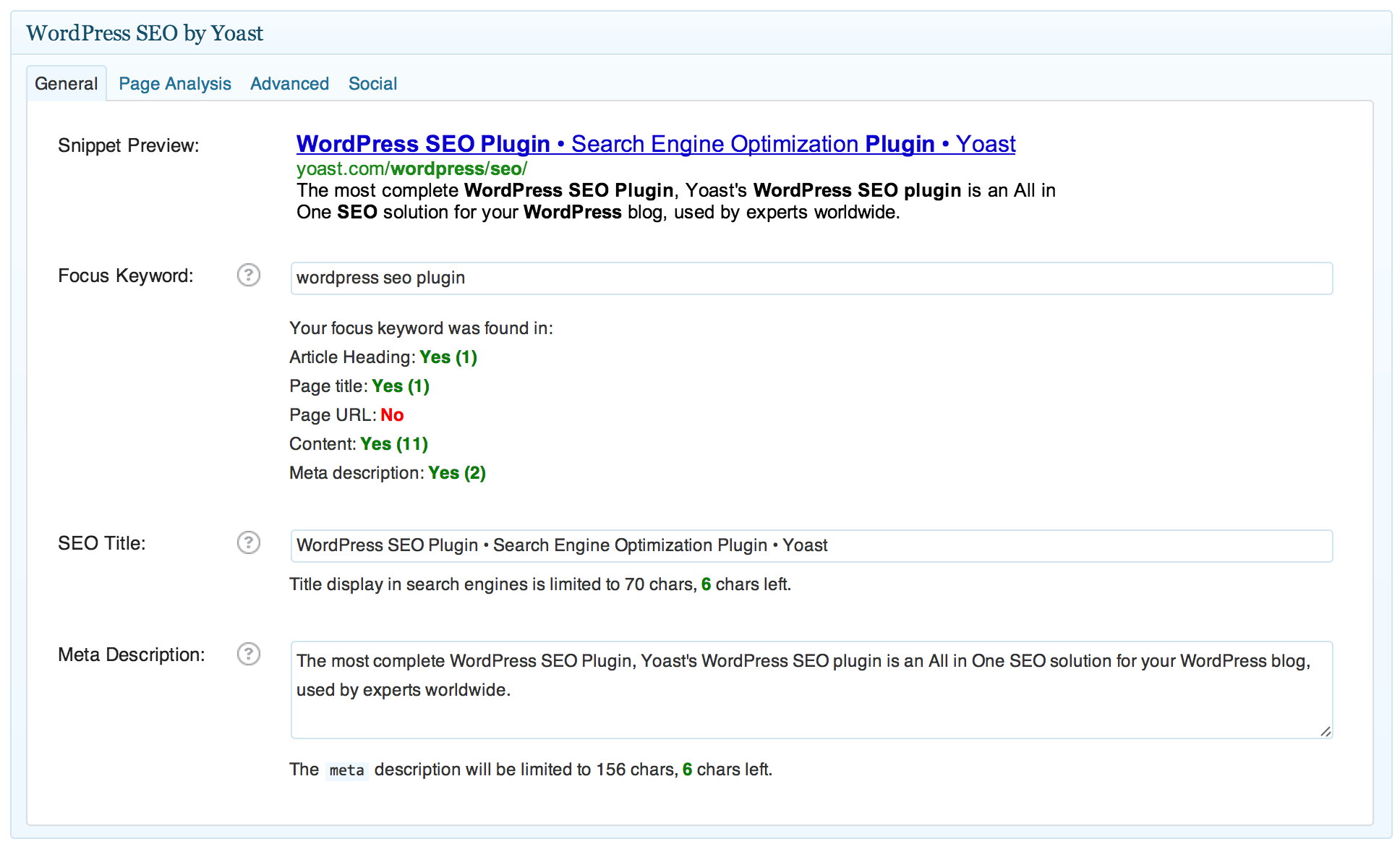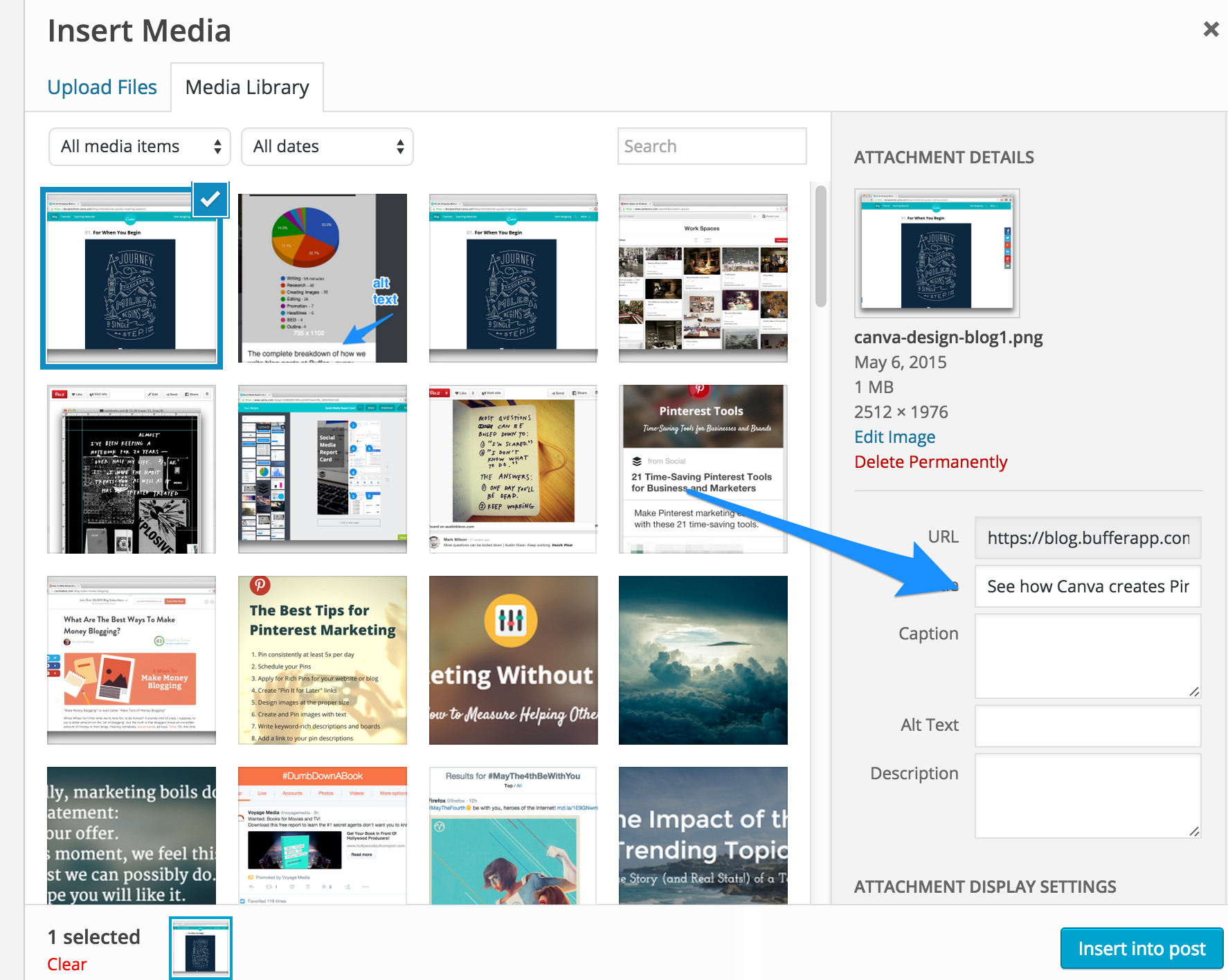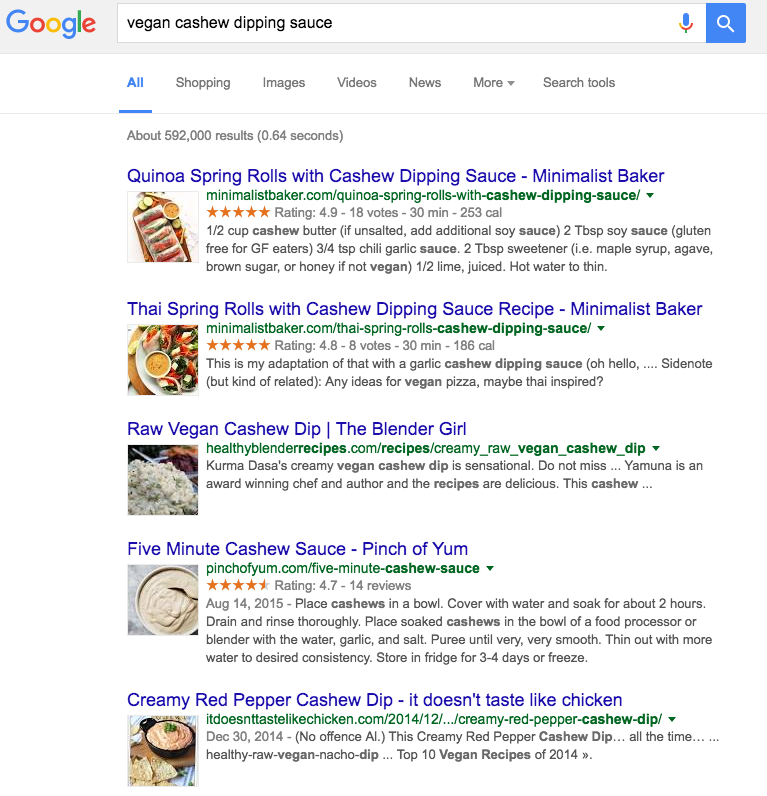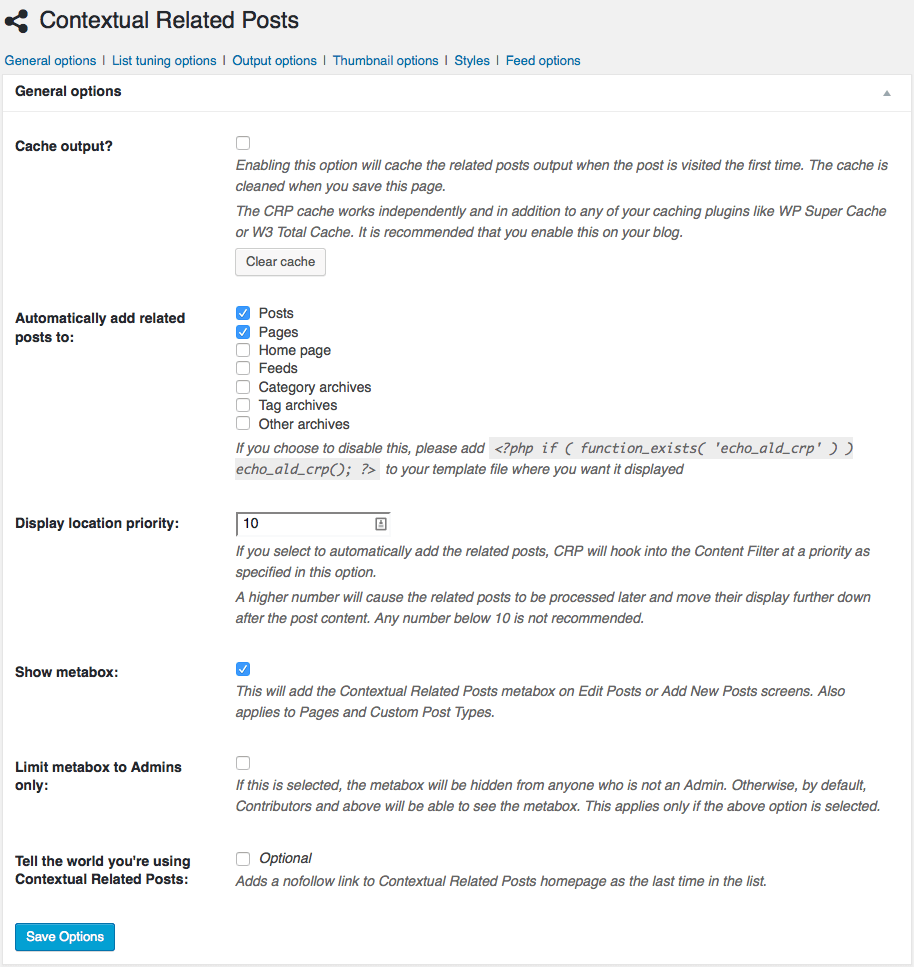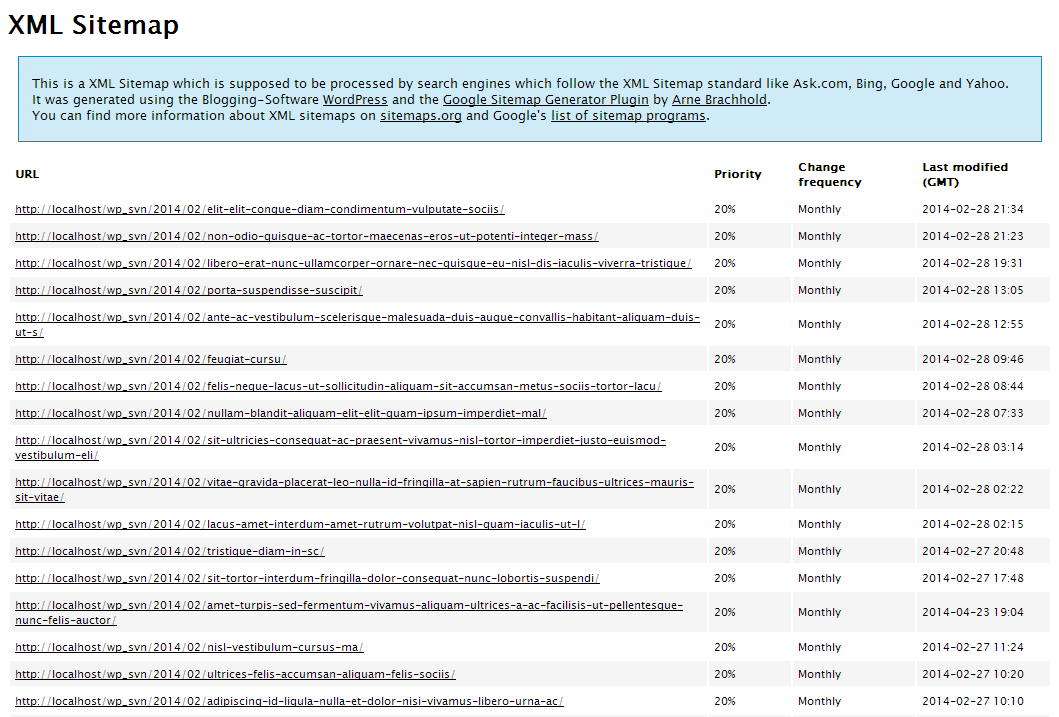16 SEO Tactics You Need to Do To Your WordPress Site Right Now - Quick Sprout
16 SEO Tactics You Need to Do To Your WordPress Site Right Now - Quick Sprout |
| 16 SEO Tactics You Need to Do To Your WordPress Site Right Now Posted: 03 Aug 2016 08:53 AM PDT
You already know WordPress is the easiest and most SEO-friendly CMS in the world. Maybe you're pretty excited about it. You're glad you chose WordPress. All you have to do is publish a few blog articles and wait for the jacked-up SEO of WordPress to do its thing, right? Sorry to burst your bubble. If you think that choosing WordPress as a CMS is all you need to do, think again. Look, I'm as big a fan of WordPress as you are. It's an amazing CMS with high-octane potential, ease of use, and unlimited optimization possibilities. But notice I say potential. And possibilities. Kick-ass SEO isn't guaranteed. It takes effort to make WordPress truly SEO-friendly, and I am here to help. If you are expecting WordPress to deliver search optimization right out of the box, you won't be disappointed. It's not terrible. It's just not optimized to the level that it needs to be in order to be truly powerful. We're going to make it powerful. Here are 16 SEO tactics you must deploy immediately to rank your website higher on the SERPs and get more traffic and leads. 1. Generate plain English URLsHow do you want your URLs to show up on search engines? Like this?
Or like this?
By default, the WordPress CMS generates URLs that contain special characters such as the question mark, post number, and maybe other horrific unspeakables (see the image below).
You want search engines to be able to see your post titles because they contain valuable-SEO keywords. To ensure your titles show up in your posts’ URLs, do this:
You're all done. Your URLs will now be in plain English. Big caution here: Don't go changing all your existing URLs. Doing so will produce an SEO nightmare. Instead, make the change for all your future articles. 2. Convert your HTML and JS to AMP (Accelerated Mobile Pages) HTML/JSAMP is the new golden standard created by Google for mobile pages. AMP lightens pages and makes them load faster. Faster-loading pages are manna from heaven for mobile browsers. The logic is simple: The faster your pages load and the more AMP-ready they are, the higher they’ll rank on Google. You will find your place on Page #1, Position #1 right in the Google AMP carousel. Here's how AMP pages are delivered by Google:
The deal is to convert your regular HTML/JS to AMP HTML/JS. You can do this in two ways:
If you have the choice, my advice would be to hire a developer. The plugin is new, and the developers need to do some work on it to get it into shape. 3. Write optimized meta titles and descriptionsI'm sure you've heard about the Yoast SEO Plugin. The Yoast SEO plugin is a terrific tool that allows you to write titles and descriptions and focus on a keyword by reporting on your keyword's appearance in the page title, article heading, URL, meta description, and content. Yoast's developers are smart, and they keep updating the plugin based on the latest SEO standards. For example, Yoast has modified the number of characters in the title from 55 to 70, keeping up with the latest Google changes.
Just install Yoast, and you're set. Almost. Yoast is a tool, but it doesn't do the work for you. In order for Yoast to be effective, you need to work through each of the optimization sections for every blog post you publish. 4. Add a title and alt-tag to all imagesYou don't need a tool to do this. Just log in to the WP admin area, and select “Media.” Once there, choose the images or open the media library, and start adding titles (if you haven't already), alt tags, and captions to images. The text must be keyword-rich and relevant, but make sure you don't keyword-stuff. Use captions wisely. If the image doesn’t require a caption, don't add one. Captions provide only marginal SEO benefit and may negatively impact the usability of your site.
5. Install rich snippetsRich snippets help Google serve rich results that appear meaningful and make more sense to users. You've seen rich snippets before. They appear often in the SERPs:
Notice that the top two results have star ratings, upvotes, prep time, and calorie count. Not bad, huh? These extra SERP features make the top two results, and even the fourth result, a lot more interesting and clickable than the third one. The ratings and other rich data contained in the results showed up there because the websites have programmed rich snippets into their HTML codes. How do you implement rich snippets? Here are a couple of options:
Again, I recommend hiring a programmer because it gives you more control over the coding. Besides, you don't have to worry about a buggy plugin or plugin updates. You can ask your programmer to build in rich snippets (and rich cards) for reviews, events, articles, people, video, recipes, and software tools. 7. Secure your websiteWordPress may be the friendliest CMS ever, but it’s also the most vulnerable to hackers, malware, and trojans. Why? Not because it's inherently shoddy, but because it's insanely popular. As the most popular platform, it's also the biggest target for nefarious hackers. Your WordPress theme, plugins, databases, and file permissions are all open to attacks. Securing your website is one of the best SEO practices. It makes search engines view your website positively and rank it higher than other non-secure sites in your niche. A secure website also comforts users and customers when they realize their data is in good hands. I recommend you install WordFence, an open-source enterprise-class security plugin. It will build a Fort Knox around your website, monitor it in real time, receive and upgrade threat perceptions automatically, and generally keep your website humming on securely. 8. Add cachingCache plugins work by caching (storing) pages, databases, database queries, etc. and then serving them on the fly without executing PHP code or database queries. A cache plugin can help you significantly reduce the loading time—a good thing for both search engines and users. I recommend you install the most popular and efficient WordPress caching plugin, W3 Total Cache. It's backed by a community of avid users, years of improvements, and a solid track record. 9. Control spammy commentsSpam showing up in comment sections of WordPress sites is distributed by automated tools. If you are not careful, you will find that piles of comments with backlinks to pharma or adult-themed websites have sneaked their way into your blog posts. You don't want search engines to notice and possibly penalize you for spammy comments, do you? To get rid of all evil comments, you absolutely must install Akismet or a similar highly-ranked comment blocker. Akismet checks all comments, catches the spammy ones, and reports on comments that contain misleading links. You can then browse the comments caught by Akismet and delete the ones you consider spam. Akismet is a free plugin for personal blogs, but business blog owners have to purchase a key. 10. Keep visitors engagedWhen visitors hang around your website, flipping through posts, it lowers the bounce rate and increases the browsing time per user—both of which are significant SEO factors. Aside from writing great content, you also should display related posts to pique your visitors' interest further. There's no coding involved. All you have to do is install the Contextual Related Posts plugin:
This feature-rich plugin generates thumbnails and supports shortcodes, widgets, and CSS styles. Go for it! 11. Make your posts socially shareableYou already know that posts that can be shared can help increase traffic, leads, and sales. You also already may have installed social sharing icons on your blog. If you haven't, install this nifty Social Media Share Buttons plugin. Gaining social shares is a huge SEO benefit and one that you don’t want to neglect. 12. Back up your websiteCan you imagine what will happen to your content, SEO, databases, leads, reputation, brand, hard work, and more if your website crashes or vanishes for reasons known or unknown? Yeah, it's horribly frightening to imagine such a scenario. So, why even think about it? Because it happens. And when it does, you'll feel like your world has come crashing down. Buy and install the Backup Buddy plugin, set it up, and sleep soundly, knowing that your website is indestructible. 13. Optimize your databaseIf you do not maintain and optimize your WordPress or WooCommerce site's database from time to time, chances are it will bulk up and go belly up. That's because WordPress keeps creating a revision of a post every time you create or edit it. Aside from that, comments and other junk keep regularly collecting in the database, slowing down your website and cannibalizing your server space. To optimize your database, download and install WP-Optimize—a free database optimizer—and clean up your database regularly. 14. Generate a dynamic sitemap.xmlAn XML sitemap helps search engines understand your website fully and index it efficiently. You already may have installed a sitemap.xml, but is your sitemap dynamic? Does it keep updating every time you add content? If the answer is no, install Google XML Sitemaps—a very popular and helpful plugin that either generates dynamic sitemaps or allows you to create one manually.
After creating one, upload it into your root folder (yoursite.com/sitemap.xml). 15. Secure your formsAre your contact forms secured by CAPTCHA? If they are not, you are inviting trouble. There are hundreds of thousands of hackers and spammers who own bots that crawl the web looking for unsecure contact forms. Such forms are quickly stuffed with spammy and useless comments, designed to bloat your database, eat up disk space, and slow down your site. I am not talking about just one or two annoying comments. Unsecured forms can get hundreds of comments every day. The solution is to add CAPTCHA. Here is one plugin that can help: Really Simple CAPTCHA. 16. Guide search enginesSearch engines typically crawl and fetch all pages unless you restrict them from indexing some areas on your site. For example, you don't need search engines to crawl and index your WP-admin area, CSS, and Javascript files. Therefore, you need to upload a robust robots.txt file that tells search engines where to crawl and where not to. If you haven't written an efficient Robots file yet, use Virtual Robots.Txt to create one. After creation, upload it into your root folder (yoursite.com/robots.txt) ConclusionKeep in mind, technical optimization alone won't help you succeed in SEO. To be truly successful, you need to populate your WordPress site with content—amazing content. Lots of content. Optimized content. Technical SEO only gets you so far. It's a crucial building block, but it's only that—a building block that allows you to do the next steps such as off-page SEO, content optimization, and content marketing. Follow all the tactics above to make your website more SEO-friendly than ever before. How's your WordPress SEO? What tools or methods do you use to improve it? |
| You are subscribed to email updates from Quick Sprout. To stop receiving these emails, you may unsubscribe now. | Email delivery powered by Google |
| Google Inc., 1600 Amphitheatre Parkway, Mountain View, CA 94043, United States | |

